What Is VoIP And How You Can Use It To Reduce Your Phone Bill
Voice over Internet Protocol – or VoIP – is the next big revolution in the telecommunication industry. What it does, essentially, is turn analog voice signals into digital packets that can be sent over the Internet instead of going through your wireless carrier, in a way that is no different from other data that is transmitted through the Internet. It’s a lot cheaper for both the customers and the service provider, offers higher quality audio than your standard phone call and is a lot more reliable in many cases. And it’s got wireless carriers scared out of their wits. In what follows, we will discuss the advantages and disadvantages of using VoIP over traditional telecommunication methods.

Advantages Of Using VoIP
The advantages of using VoIP are easily understandable.
Calling costs are significantly reduced since sending data over the Internet is so very cheap. As a matter of fact, every VoIP service we know of offers on-network calls (e.g. Skype to Skype, Viber to Viber) for free! Rates for calling traditional landline and mobile numbers are also significantly cheaper than traditional calls.
Although this isn’t the case with every VoIP-based call, call quality is almost always better, if not at par with GSM/CDMA calls, as long as you have a broadband internet connection available with adequate amount of free bandwidth.
VoIP services work wherever and whenever you have internet connectivity. This can be a major advantage if you travel to locations with high speed Wi-Fi or 3G access on a regular basis, since you will bypass your carrier’s terribly expensive roaming charges.
Disadvantages Of Using VoIP
VoIP services work wherever and whenever you have internet connectivity. This is a big disadvantage of using VoIP if you happen to travel to locations where internet connectivity is unavailable. Also, the call quality will significantly deteriorate when you don’t have enough bandwidth available like on slow connections or even fast connections with very heavy download/upload activity.
For now, most VoIP services do not let you call emergency numbers such as 911. This is due to the fact that such emergency services use your location (tracked using Assisted GPS) to quickly reach you; VoIP services generally use an IP address that can’t be used to track your exact location.
Traditional landline phones do not depend on socket power for making and receiving calls. IP phones and VoIP adapters, on the other hand, do depend on the same power source as your home appliances, so they will go down in case of a power failure.
Lastly, since VoIP is an Internet-based service, it is vulnerable to attacks just like any other Internet-based service. If not properly secured, people with malicious intent may find a way to hack into your VoIP service provider and extract personal data. Additionally, if you’re making VoIP calls over unprotected WiFi, it can potentially be intercepted by someone using a ‘packet sniffer’.
Why VoIP Services Scare Wireless Carriers
According to one estimate, WhatsApp and other similar internet-only free texting services have cost over 17 billion Euros to wireless carriers around the world in 2012. Just imagine the loss to these carriers if most of their users switch to free VoIP calls just like free texting with Whatsapp. This is all quite scary for big wireless carriers like Verizon, AT&T etc. that sell their telecommunication services at exorbitant rates on basis of call minutes and number of texts.
VoIP services like Viber have no such limitation. They offer unlimited voice calls and texts, with the only limitation being external: the quality of the internet connection that it uses to send / receive data. With the advent of super high-speed WiFi connections and 4G LTE, that limitation is quickly fading away.
The carriers are slowly but surely adapting to the emergence of VoIP. In the US, for example, T-Mobile offers ‘Bobsled Calling’, which lets you call mobiles/landlines in US, Canada and, yes, Puerto Rico for free.
Smartphone manufacturers, too, have recognized this trend. Apple introduced FaceTime for the iPhone 4 in 2010; it now works across all their latest personal computing devices. Microsoft purchased Skype, and their new mobile OS i.e. Windows Phone 8 integrates Skype and VoIP services right into the phone dialer so VoIP calls feel like any other calls that you send or receive on your phone. Google Voice, while multiplatform, isn’t baked into Google’s own smartphone OS – Android – the way it should be, but by installing its apps in supported regions, you can use it for calling and texting just like regular calls and texts.
Now, if you happen to own a smartphone, you’ll be interested to know about the absolute best VoIP apps available for your platform. Let’s get right to them.
Top VoIP Apps & Services
Viber
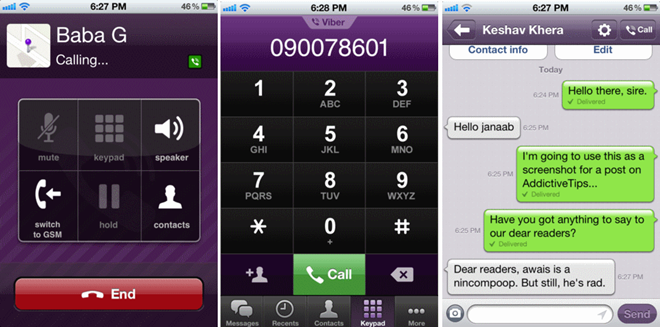
Viber is one of the most popular cross-platform VoIP apps available for smartphones. It offers crystal clear voice quality (over a stable internet connection, of course), and the ability to send instant messages to groups of people. You can also share media files with other Viber users. It works across multiple platforms including the big three – iOS, Android, and Windows Phone – for both voice calls and texts, and offers texting on less popular platforms like Bada, Symbian Series 40, and Blackberry OS. There is no complicated initial registration involved; all it takes to set up Viber is entering a three-digit access code sent to you via SMS when you associate your phone number with it. Your Viber account is simply associated with your actual phone number from then onward, and all your contacts that use Viber are automatically listed for you to call for free anytime.
Everyone in my extended family – spread over countries like the US, Canada, Bahrain, United Kingdom, Saudi Arabia – uses Viber to stay in touch for free.
Viber is a free app on all platforms. Get it for yours from the Viber website.
Tango
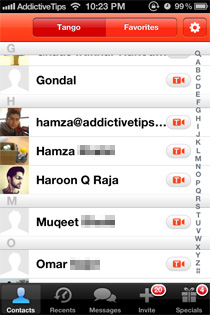
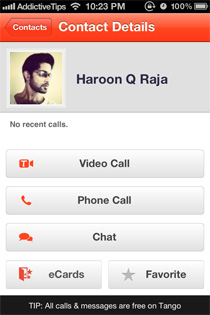
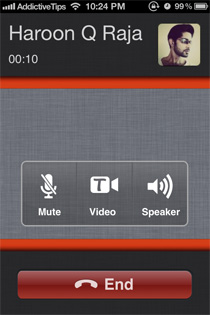
Another great option is Tango that works in a way similar to Viber and Whatasapp, allowing you to call other users of the service for free based on their phone numbers without the need to register with a username or password. Apart from offering free calls & texts and media file sharing, Tango also offers free video call support with amazing quality. Tango apps are available on most major platforms including iOS, Android, Windows Phone and Windows. You can even apply filters and play games with your contacts while video chatting, and send/receive audio and video messages.
You can get Tango for your smartphone or PC from the Tango website.
Skype
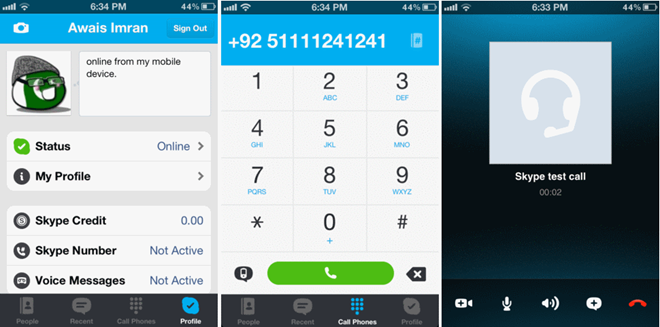
Of course, who can forget Skype? It’s the biggest VoIP service in the world today, with well over 600 million users using it on platforms like iOS, Android, Windows Phone, Symbian, PS Vita, Smart TVs from Samsung, Sony, Panasonic and LG, Windows, Windows 8 and RT, OS X and Linux. Feature-wise, it’s the absolute king of VoIP since you can instant message, share photos, make voice and video calls with up to 10 other Skype users at a time, share your screen and more. Some of these features are, of course, limited by their platform. You can even use Skype’s cheap calling rates to call landlines and mobile phones around the world at a fraction of the cost based on carrier’s call rates.
Skype is available for free across all platforms, but you have to pay extra for premium features like voice calling to non-Skype users. You can learn more about it from the official website.
Bobsled Calling
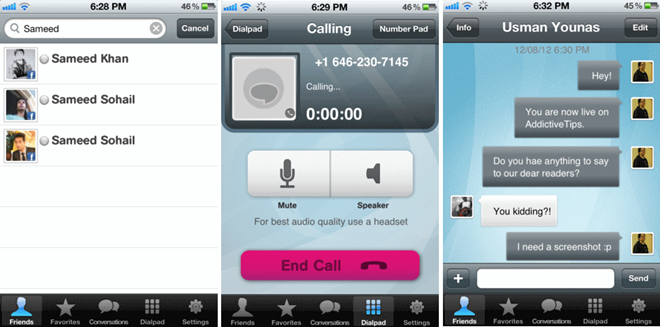
We’ve mentioned Bobsled before in this post. It is different from other services like Skype and Viber in that it not only lets you call other Bobsled users, but also mobile and landline numbers in the US, Canada and Puerto Rico for the awesome price of absolutely free. In addition to this, it works not only on iOS and Android, but also through your web browser!
It’s excellent for those of you who live in the three supported countries, as well as for those of who live elsewhere but frequently need to make calls to the supported countries. My only gripe with it is that it requires you to login using Facebook.
Bobsled is available for free. Get it for your platform from the official website.
Did we miss your favorite VoIP service? Let us know about it by leaving a comment below!

I use imo.im wich is avaible on android and ios, and on a desktop computer you can use the browser(www.imo.im)
During hurricane Sandy, luckily I had POTS line at home I was able to make phone calls. Power went out, cable even Smartphone signal all DEAD. Good luck surviving weather disasters with VOIP.
Take a look at Obihai’s VoIP bridge. It plugs into your network and allows using Google Voice on a VoIP handset.
Line is the best
I’ll tell you another service – though not exactly a VoIP service since it’s more a “walkie-talkie” service – that works flawlessly even on 3G Internet connections that for obvious reasons was not mentioned here: the former “Loudtalks” now called “Zello” and which has another major advantage: it has it’s own PC Windows application and thus enabling users to keep in touch not only between smartphone users but also a smartphone user and a PC Internet connected.
There’s also the Canada only app called Fongo that lets you call anywhere in Canada for the most part and isn’t limited to the recipient needing the app like viber
https://play.google.com/store/apps/details?id=com.fongo.dellvoice